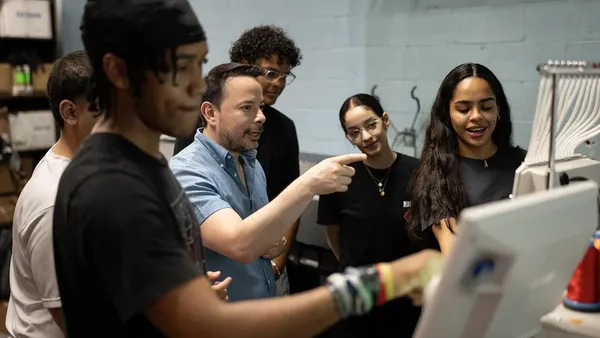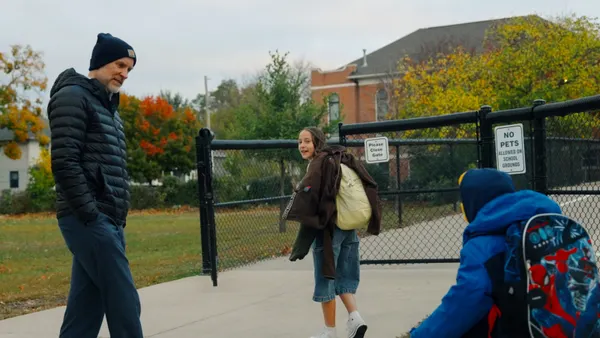Dive Brief:
-
Music can help reinforce and deepen learning and social-emotional skills in students, Edutopia reports. Experts believe music helps in this regard because of how the brain engages with and makes sense of sound, as music connects to multiple input areas in the brain including motor, cognitive and sensory systems.
-
Teachers can weave music into the classroom through many pathways: Young students can learn how to play a beat, which can also signify a child is ready to read, or educators can teach English learners how to play instruments, which has been shown to help with language acquisition.
-
Organizations from the Harmony Project to the Save the Music Foundation are stepping up, trying to bring both instruments and training into schools to build more opportunities for students to be exposed to music and its learning power.
Dive Insight:
English teacher Lakisha Odlum likes to play music, including John Coltrane, to “set the tone in the classroom,” she said. This might happen when students are working on projects or when they’re holding their annual poetry cafe.
She finds the lyrics can provide a gateway to poetry lessons, helping to make the prose more accessible in her classroom at The Young Women’s Leadership School of Queens in New York. Linking music to curriculum works because students are often already listening to music when not in the classroom and view it as something relaxing — not rigorous, Odlum said.
“In my experience, students only connect more to music because it is a part of their daily lives,” Odlum said. “They listen to music on their way to school, at lunch, and after school.”
Despite this instructional promise, music classes are typically not mandatory, and about 1.3 million elementary school students don’t have access to music classes, according to Americans for the Arts’ 2014 survey.
Before launching any kind of new English language arts curriculum in the classroom, educators could consider weaving music and lyrics into their plan. That could range from incorporating forms of expression such as poetry slams, where lines are read aloud with a student’s own voice and flair, or the use of specific songs that link to topics within the curriculum.
Odlum likes to ask her students to analyze song lyrics for their imagery, similes, metaphors, symbolism and more. These are the same analytical tools they would use to study a passage from Geoffrey Chaucer or Maya Angelou, for example. Odlum said this helps her students see the parallels between both art forms.
“Often, students think that poetry is inaccessible and too hard to analyze,” she said. “In order to demystify poetic analysis, I have students analyze lyrics. We have a conversation about songs being poems, and then we analyze the literary devices and themes of the songs.”





 Dive Awards
Dive Awards





